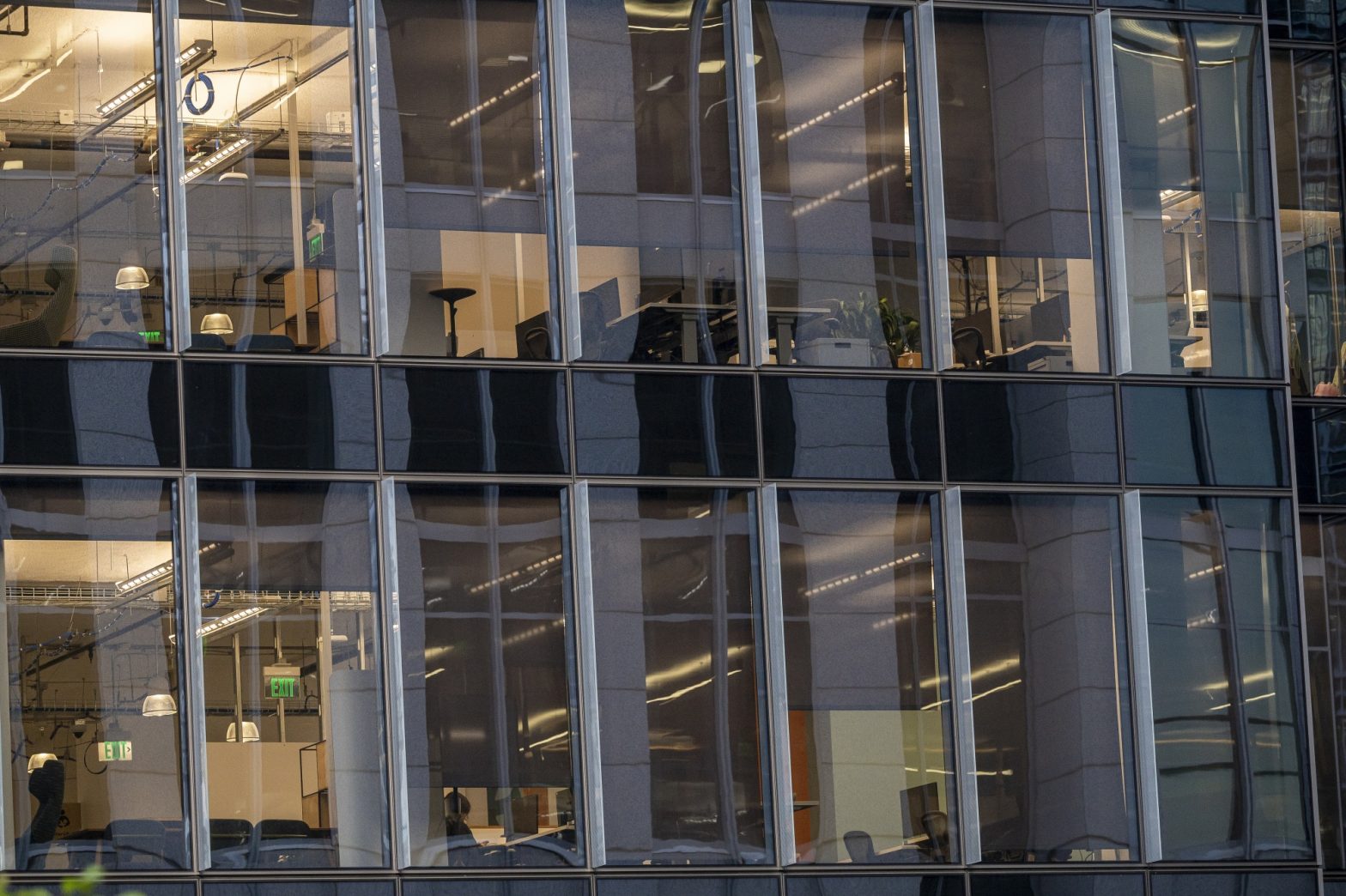——US Continuing Jobless Claim Rises to 3 Year High; US Pending Home Sales Slide; Golden Era for PE Buyouts Is Over?; US Office Buildings to Lose $250bn in Value; US Mortgage Rates Fall for 4 Straight Weeks; Chewy Jumps 34% on a Cartoon Picture; SpaceX Awarded $843mn Contract from NASA
1. US Continuing Jobless Claim Rises to 3 Year High
Recurring applications for US jobless benefits have risen to their highest level since the end of 2021, signaling that unemployed individuals are taking longer to find new jobs.
According to Labor Department data released on Thursday, continuing claims, which serve as a proxy for the number of people receiving benefits, increased to 1.84 million for the week ended June 15. In contrast, first-time claims for unemployment benefits ticked down to 233,000 last week, which included the Juneteenth holiday.
Hiring has slowed significantly from the pandemic-recovery period marked by widespread labor shortages. The unemployment rate also increased last month to 4% for the first time in two years. Economists and Federal Reserve policymakers are closely monitoring claims data for indications of whether the labor market—which has so far shown surprising resilience—is continuing to weaken.
Goldman Sachs Chief Economist Jan Hatzius recently noted that the labor market is approaching a potential “inflection point,” where a further significant softening in demand for workers could lead to an increase in joblessness.
______
2. US Pending Home Sales Slide
An index of US pending existing-home sales unexpectedly fell in May to the lowest level on record, as elevated mortgage rates and high prices discouraged prospective buyers.
The gauge of contract signings from the National Association of Realtors (NAR) decreased by 2.1% to 70.8 last month, marking the lowest reading since the data series began in 2001. Economists surveyed by Bloomberg had anticipated a 0.5% increase.
“The market is at an interesting point with rising inventory and lower demand,” NAR Chief Economist Lawrence Yun said in a statement. “Supply and demand movements suggest easing home price appreciation in upcoming months. Inevitably, more inventory in a job-creating economy will lead to greater home buying, especially when mortgage rates descend.”
Closings on previously owned homes have remained near an annualized rate of 4 million for over a year, partly due to the so-called lock-in effect, where sellers are reluctant to list their homes and lose their current low mortgage rates.
______
3. Golden Era for PE Buyouts Is Over?
A long era of easy profits in private equity is gone, and Goldman Sachs Group Inc. is preparing for the more challenging work ahead.
Marc Nachmann, head of Goldman Sachs’ money-management arm, emphasized that the buyout business has reached a critical juncture, with the days of profits driven by financial engineering and “multiples expansion” now over. “Where your returns come from will be much more focused on creating better earnings growth,” Nachmann said in an interview.
In response, Goldman is bringing in corporate expertise, hiring Darius Adamczyk, the former head of Honeywell International Inc., to assist portfolio companies in improving their operations. This move is noteworthy even for a bank accustomed to enlisting high-profile advisers. Hiring a 58-year-old former CEO of a large industrial conglomerate is unusual, Nachmann acknowledged, adding, “He’s pretty young to be a retired CEO. And he’s a retired successful CEO who wants to roll up his sleeves and help.”
Goldman Sachs’ asset-management division oversees approximately $140 billion in private equity assets and manages more than 300 portfolio companies.
______
4. US Office Buildings to Lose $250bn in Value
Nearly one-quarter of all US office space is projected to be vacant by 2026 as the trend of working from home continues, potentially reducing commercial-property values by up to $250 billion, according to a report from Moody’s.
Office-vacancy rates are expected to rise to 24% from 19.8% in the first quarter of this year, which, when combined with lower rents and lease turnovers, could reduce revenue for office landlords by between $8 billion and $10 billion, the report’s authors stated. This scenario could lead to “property value destruction” amounting to around a quarter-trillion dollars, according to Todd Metcalfe, Moody’s associate director of commercial real estate (CRE) forecasting, and Tom LaSalvia, Moody’s head of CRE economics, in a separate analysis not included in the report.
These figures highlight the bleak outlook for property owners and lenders as employers continue to reduce office space or switch from long-term leases to shorter-term and flexible co-working arrangements.
A survey by brokerage Jones Lang LaSalle Inc. found that 85% of North American organizations have adopted hybrid work models, and office occupancy in major US cities remains at about 50% of pre-pandemic levels. Diminishing demand and rising borrowing costs have severely impacted office valuations, particularly for older buildings.
______
5. US Mortgage Rates Fall for 4 Straight Weeks
Mortgage rates in the US have declined for the fourth consecutive week.
The average rate for a 30-year fixed loan fell to 6.86%, the lowest level in about three months, according to Freddie Mac’s statement on Thursday. This is a slight decrease from last week’s average of 6.87%.
Despite this modest relief from the recent pullback in borrowing costs, rates remain close to 7%. This has contributed to a slowdown in new home sales in May, which fell to the lowest pace since November, and a third consecutive monthly decline in transactions of previously owned properties.
Investors are closely monitoring the Federal Reserve for indications of potential rate cuts later this year. Earlier this week, Fed Governor Michelle Bowman warned of upside risks to inflation, suggesting that rates might need to stay elevated for some time.
“By historical standards, the economy is in good shape, and we expect rates to continue to come down over the summer months, bringing additional homebuyers back into the market,” Sam Khater, Freddie Mac’s chief economist, said in a statement.
______
6. Chewy Jumps 34% on a Cartoon Picture
Shares of Chewy Inc. and Petco Health and Wellness Co. soared and then quickly fell on Thursday after Keith Gill, known online as “Roaring Kitty,” posted a cartoon image of a dog on X.
Chewy, which specializes in shipping pet supplies directly to customers, surged as much as 34% intraday, marking its biggest spike since June 2019. Petco also saw a significant increase, jumping as much as 12%. Both stocks triggered volatility halts during their rapid ascents. However, the rallies were short-lived: by 3:15 p.m. New York time, Chewy’s gain had dwindled to 3.2%, and Petco was down by 1%.
Steve Sosnick, chief strategist at Interactive Brokers LLC, remarked that stocks usually experience such dramatic movements due to significant news, like a takeover, an upgrade, or a buyback announcement. In this case, however, the cause was simply “a picture of a dog” driving the sudden market activity.
______
7. SpaceX Awarded $843mn Contract from NASA
Elon Musk’s SpaceX has been selected by NASA to construct a spacecraft designed to guide the International Space Station (ISS) out of orbit and ensure its controlled burn-up in Earth’s atmosphere after its retirement in 2030.
NASA announced on Wednesday that the contract for this mission is valued at up to $843 million.
In addition to the ISS, SpaceX’s new vehicle “is expected to destructively break up as part of the reentry process,” according to NASA.
SpaceX will be responsible for developing the so-called deorbit spacecraft, after which NASA will take ownership and operate it throughout the mission.

Source: Bloomberg – SpaceX Wins $843 Million Contract to Bring Down International Space Station
______
本文内容来自《Financial Times》、《Bloomberg》,以及《The Real Deal》等多家财经新闻媒体。






